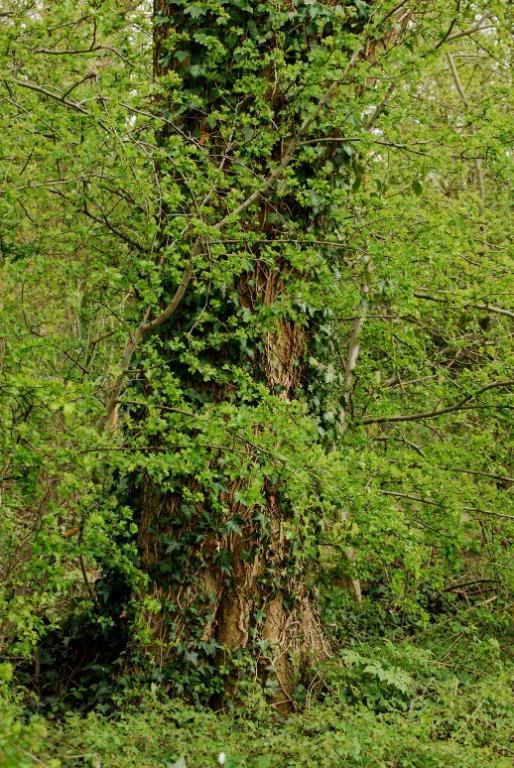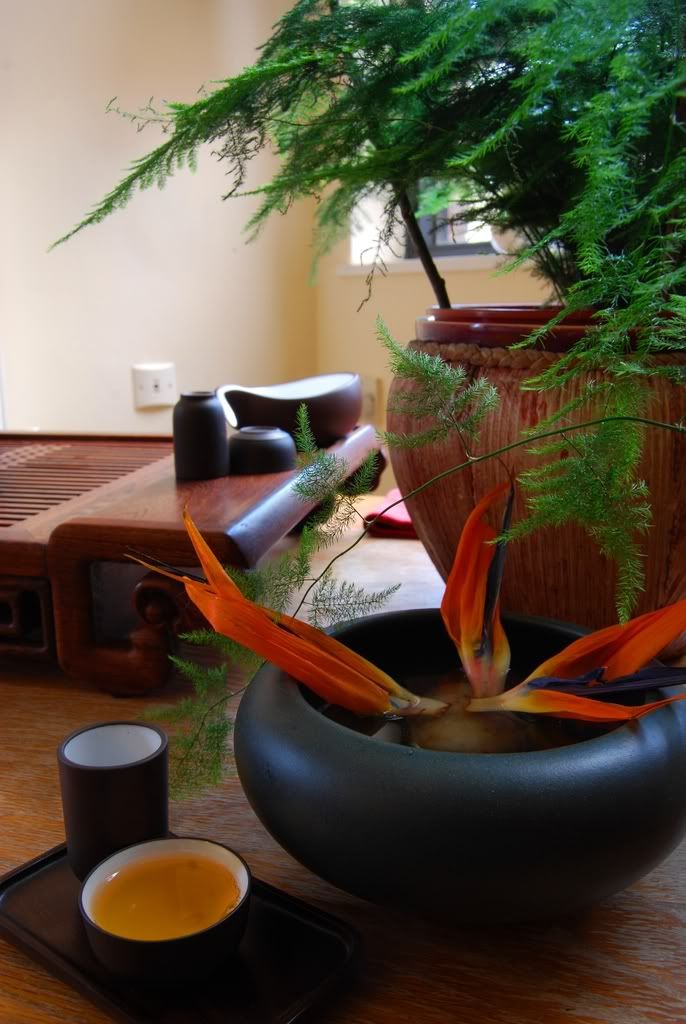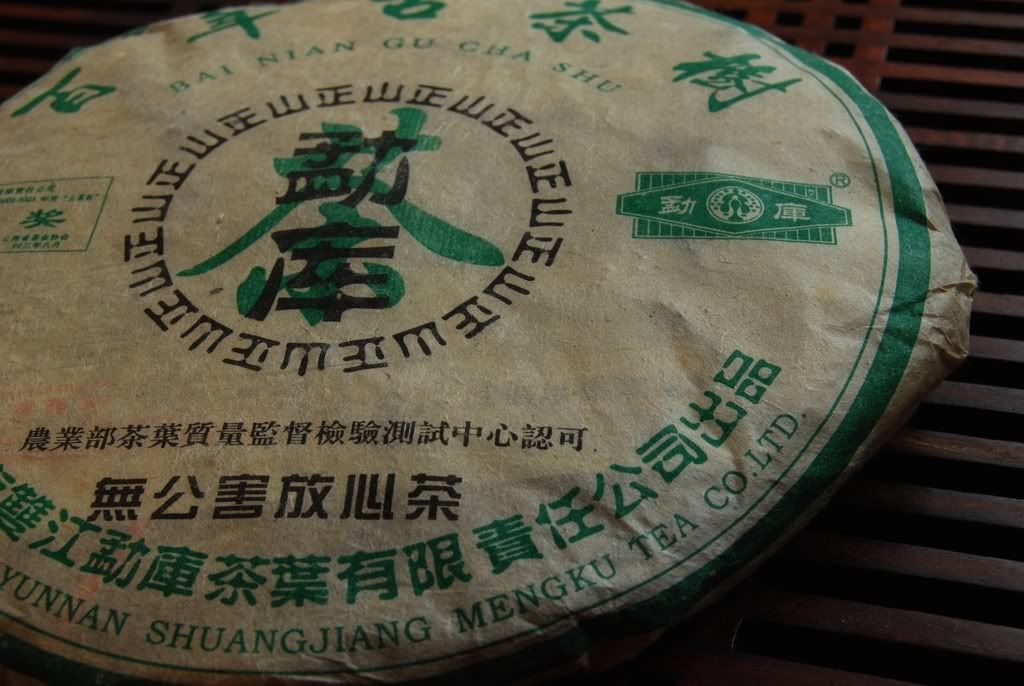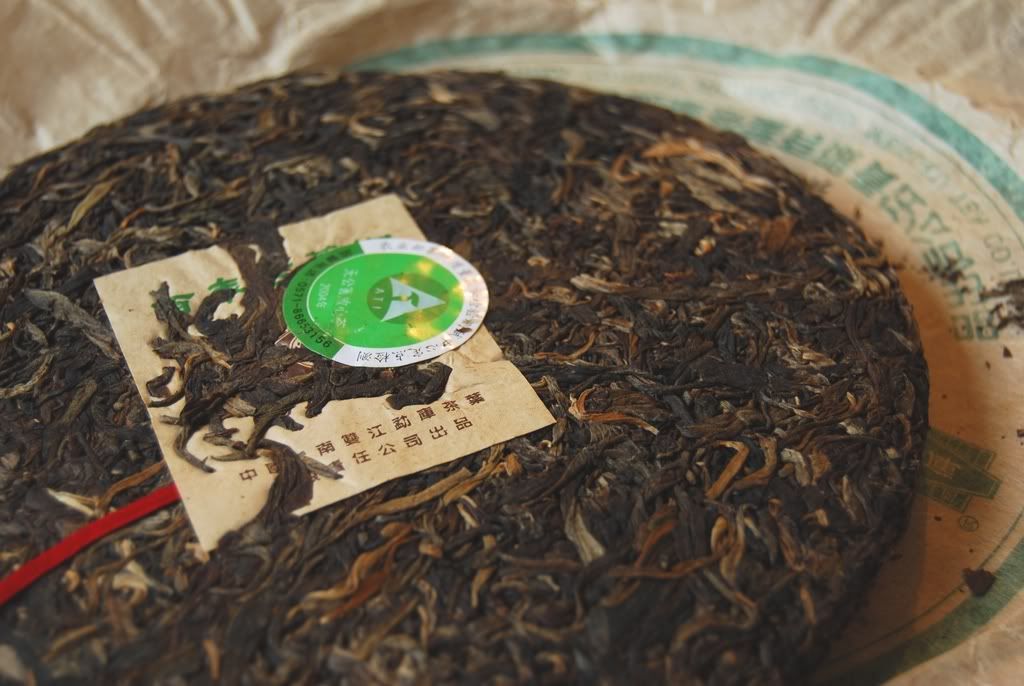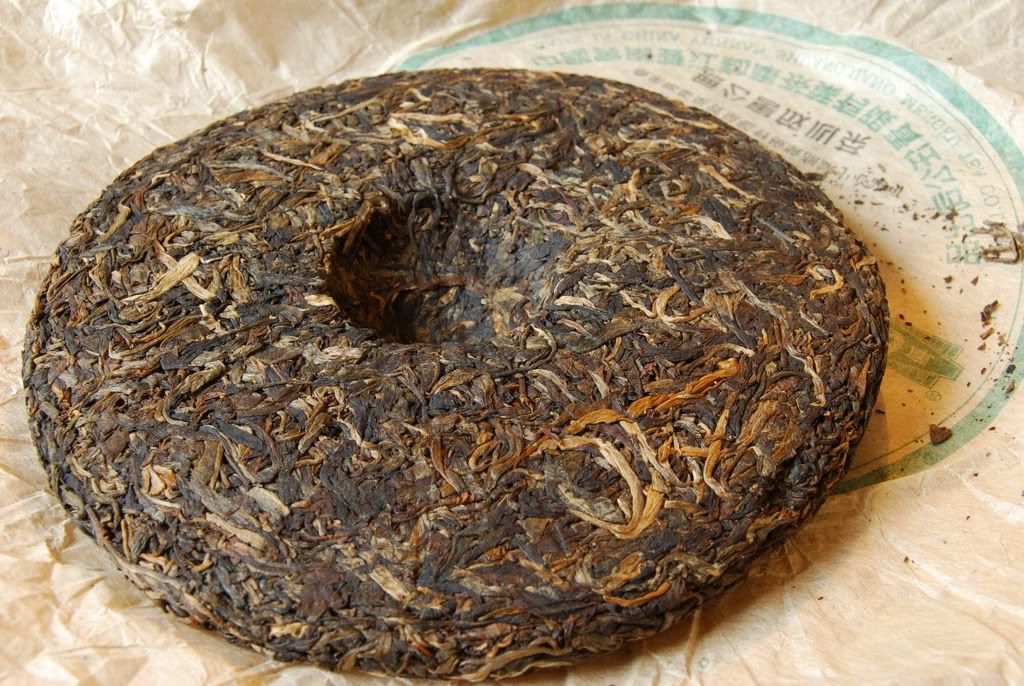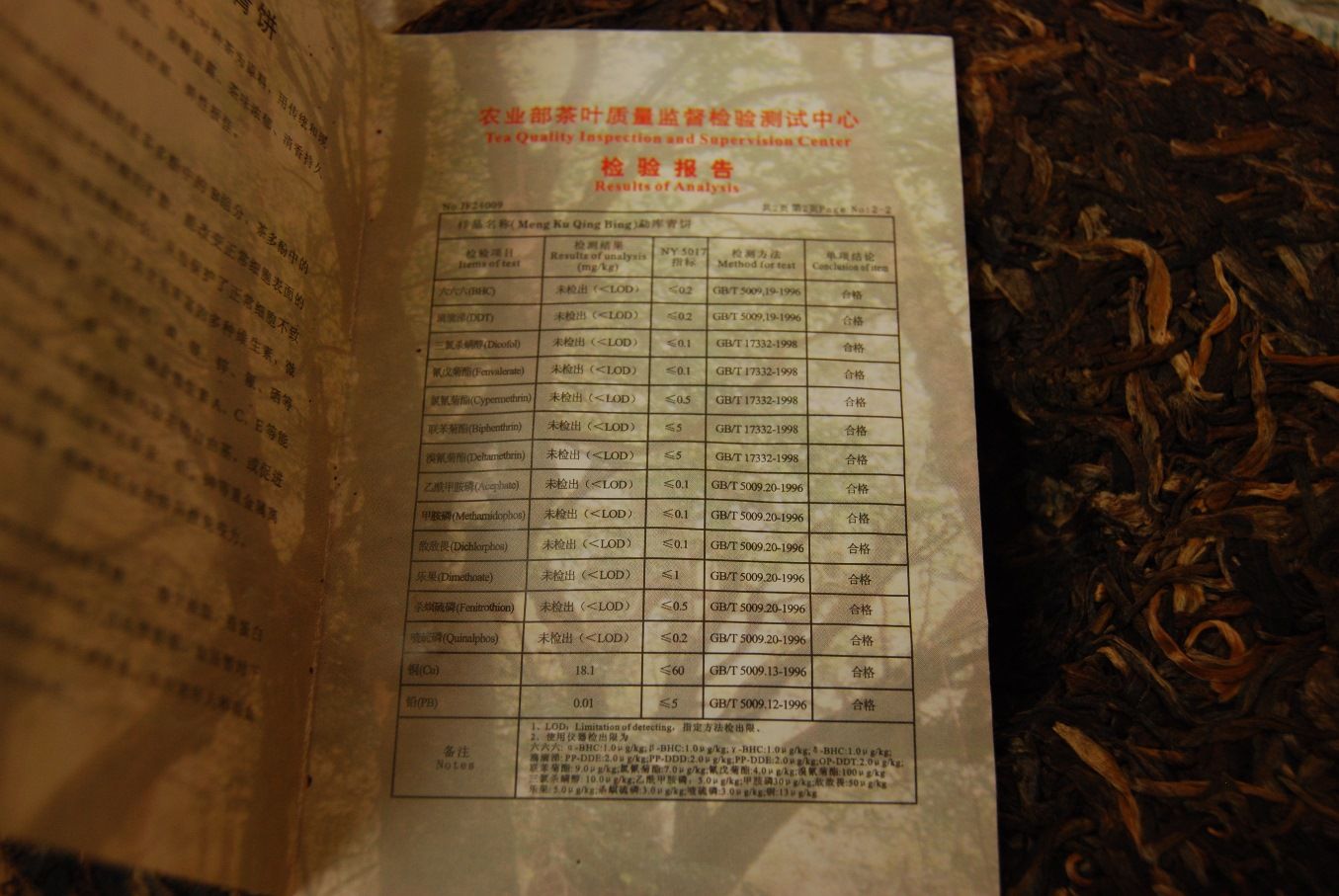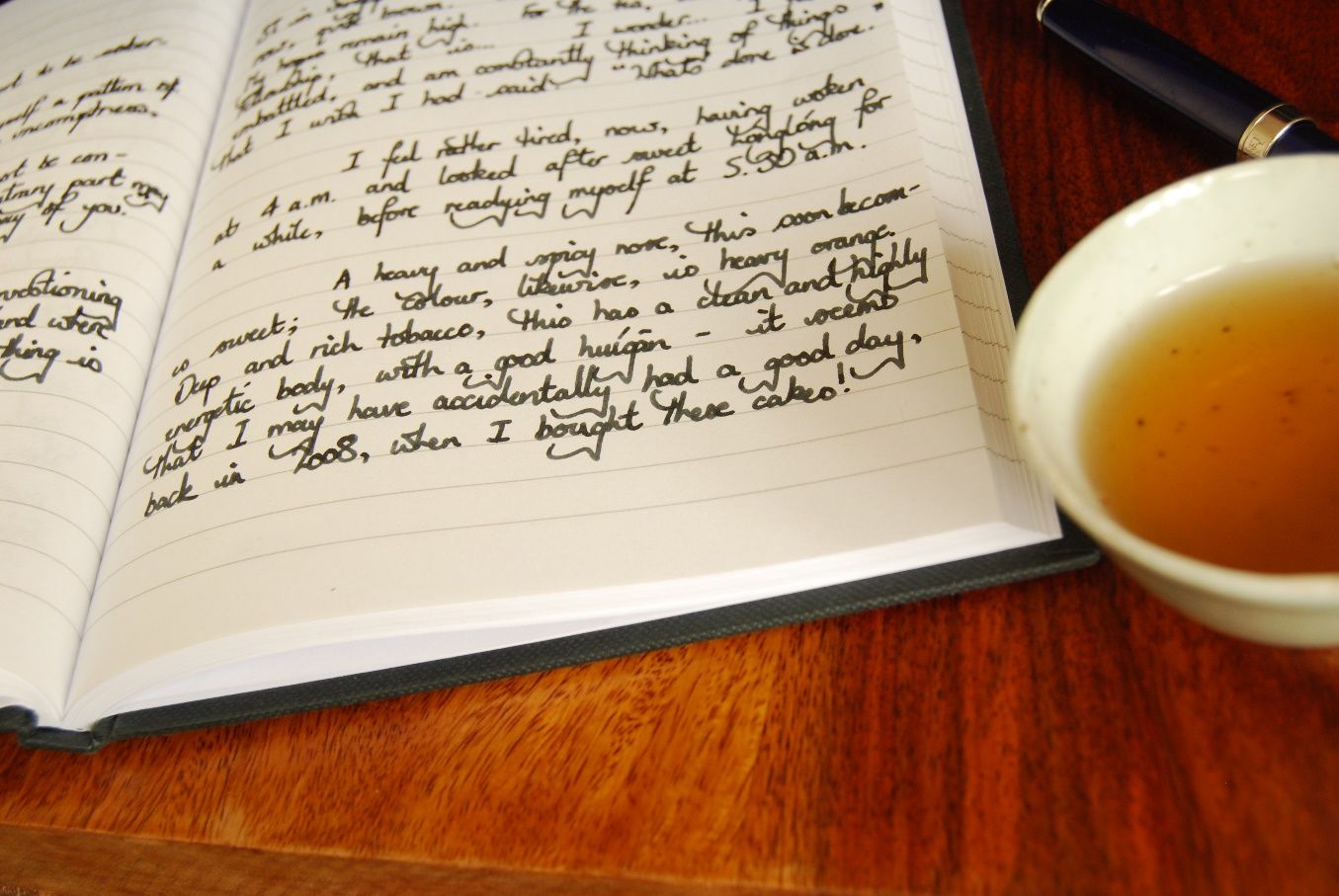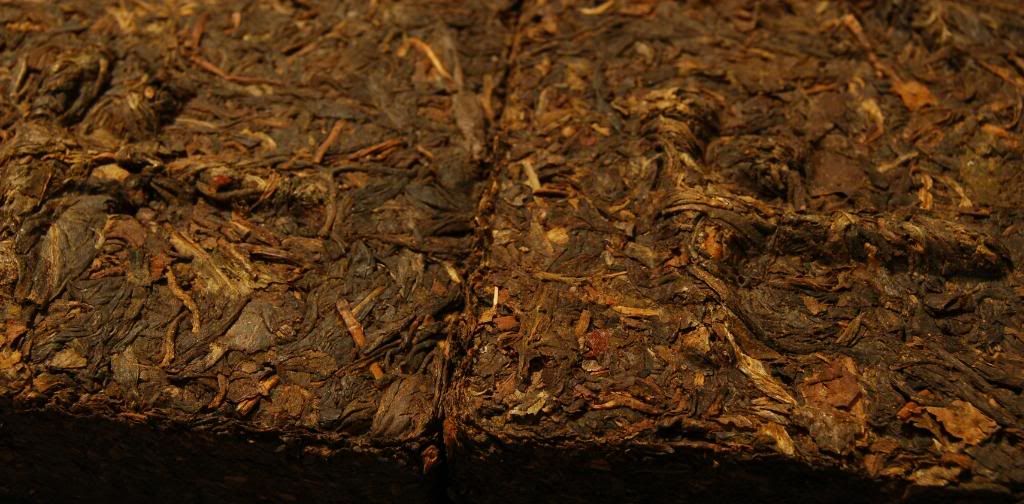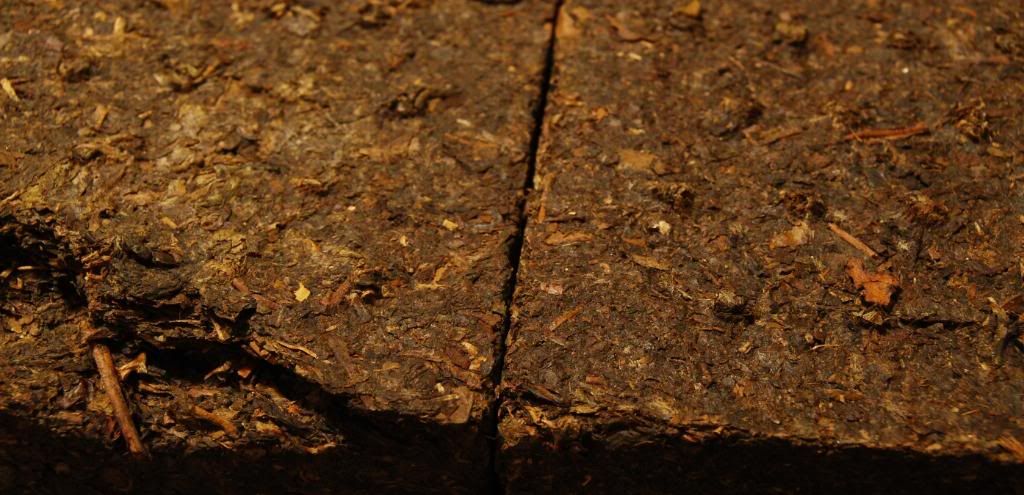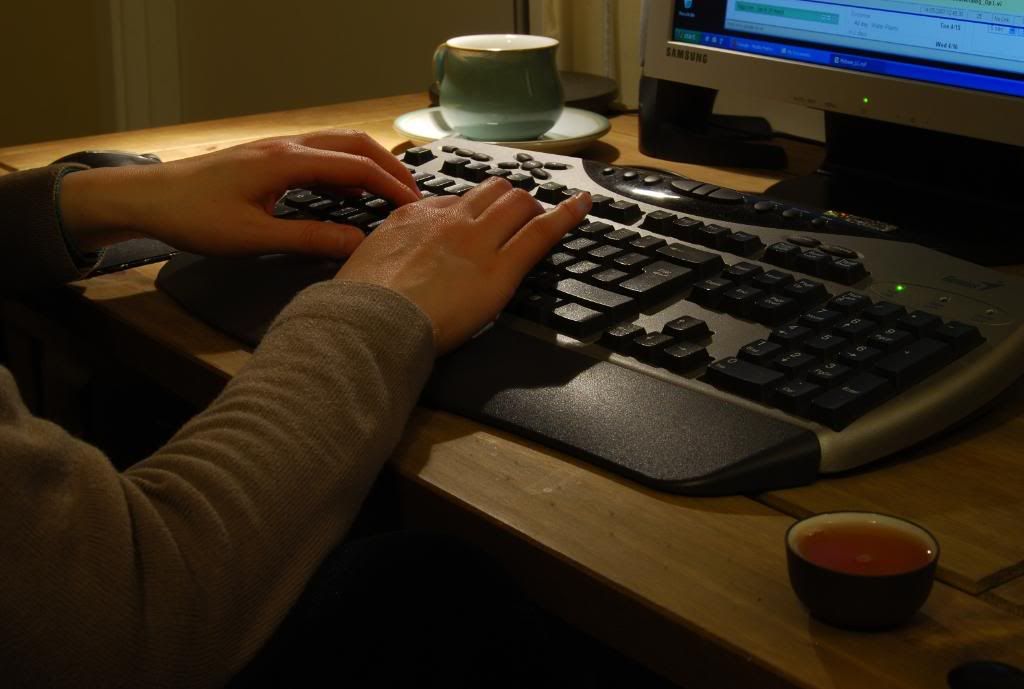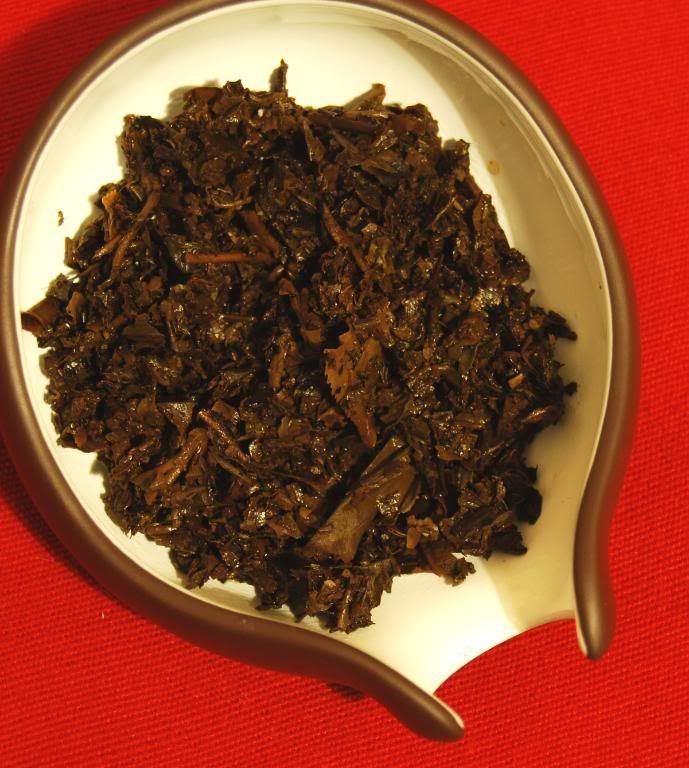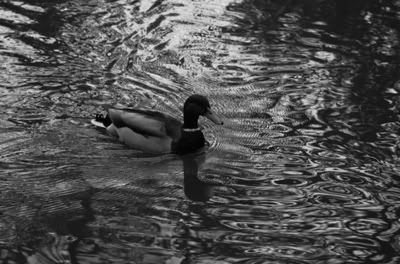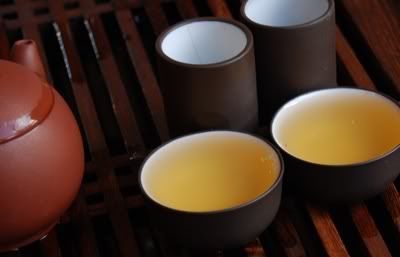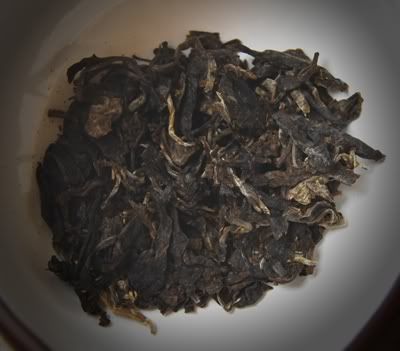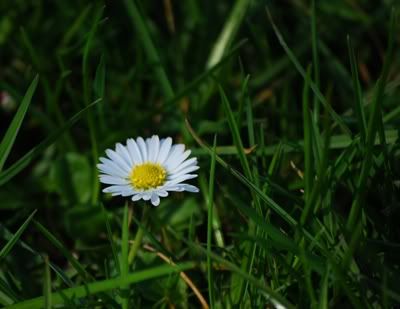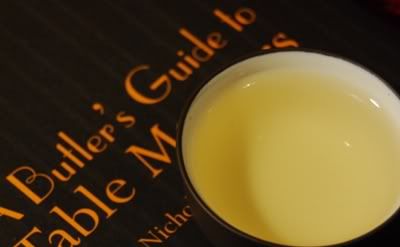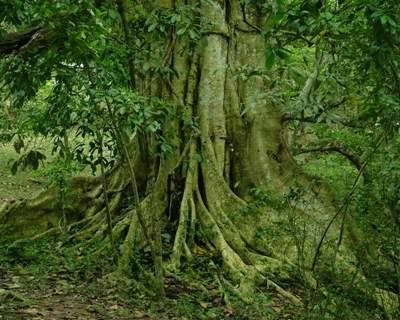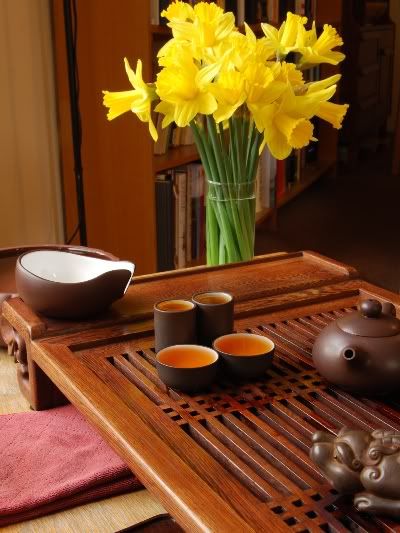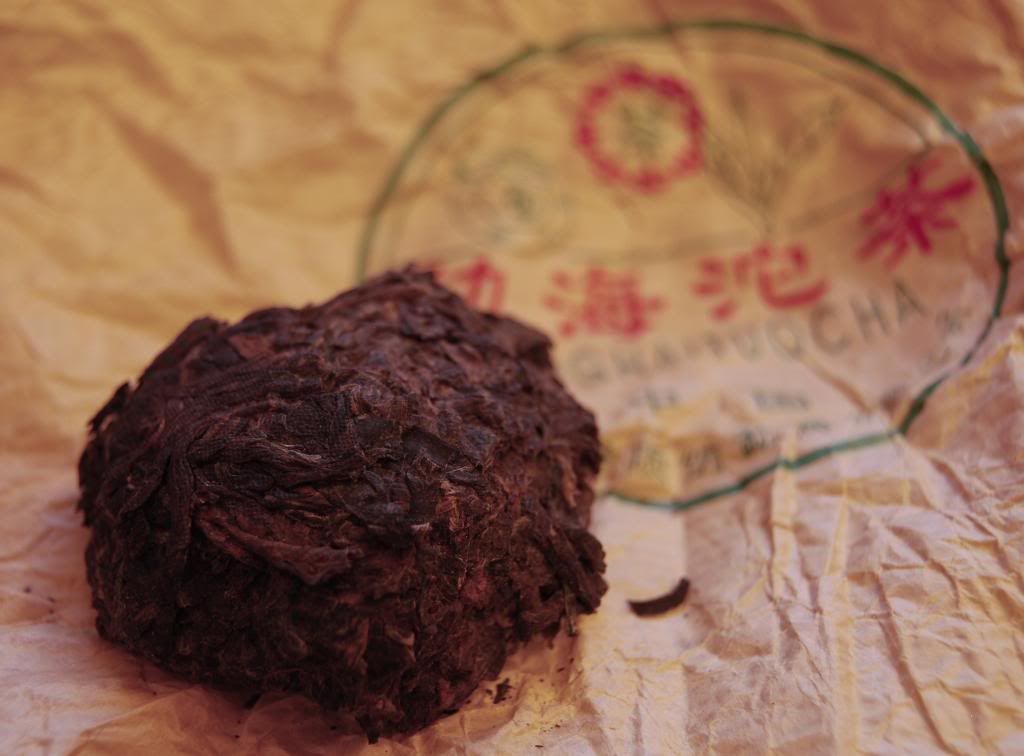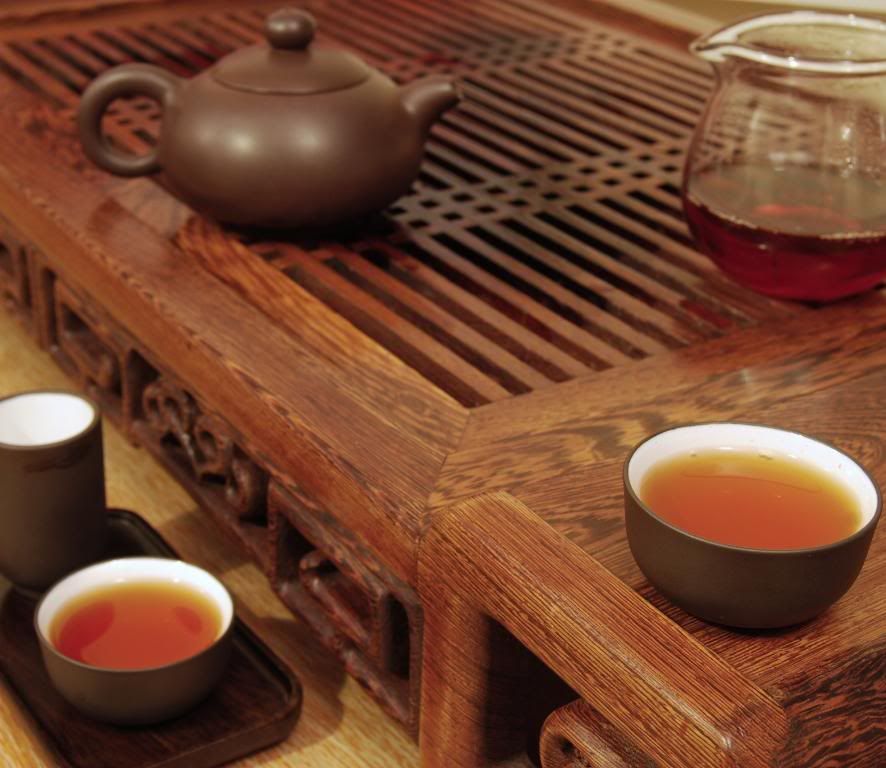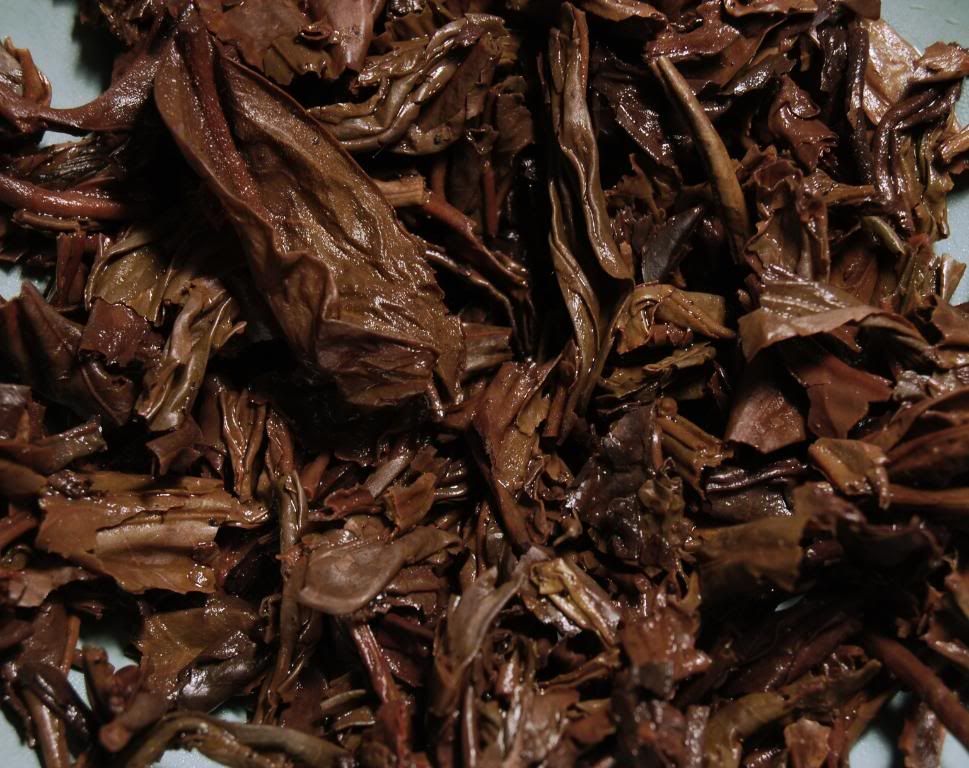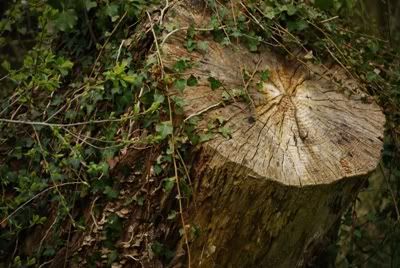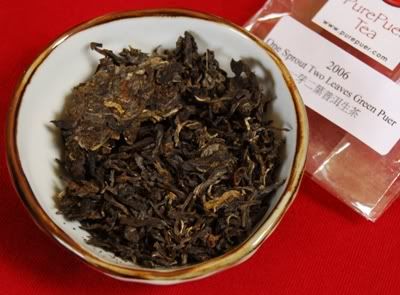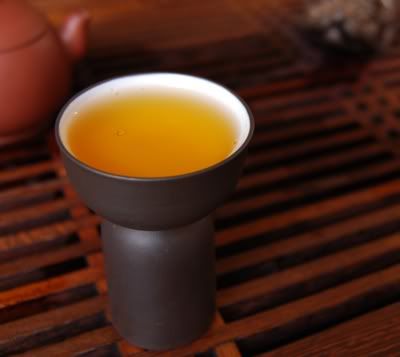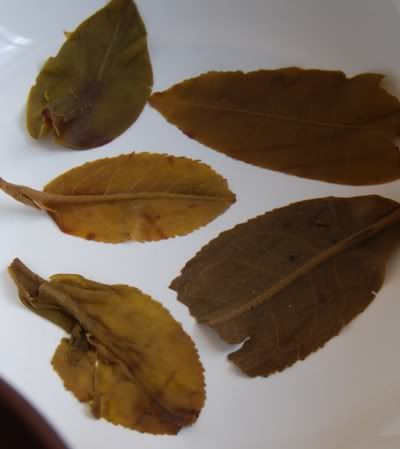Crazy label alert! Ruironghao is a brand of the Ruirong factory. I've never heard of either, and so this was a real treat. As ever, thanks to CB for guiding my hopeless tastebuds around the extrema of the pu'er map.

The leaves (shown below) are decent in size, and show signs of age. You can see the darkness already. About the dry leaves hangs a particularly splendid aroma of old oak. You don't get that from many teas...

A solid orange soup confirms that this has had some maturing. A long, low sweetness is to be found in the wenxiangbei [aroma cup], which is excellent. So far, so good - my attention is heightened!
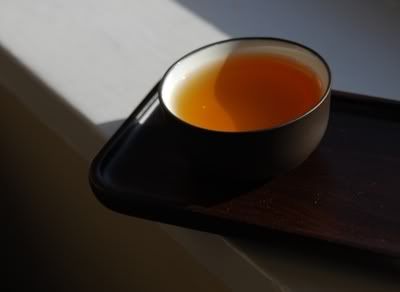
The flavour is low and broad. It has good sweetness and a thick body, finishing in a lively huigan. Noting that I was concentrating too fixedly on the sensations in my mouth, I broaden out the focus of my attention to take in my nose, head, bellow, and greater body. This seems to allow much more of the tea to be sensed.
Particularly the chaqi: it is slowing and soothing. I suspect that my body is becoming highly susceptible to this effect, as I am coming to sense it more and more in pu'er of late. Some teas really slow... me... down... and make me feel profoundly, almost narcotically, calm.

The flavour is quite depressed. In texture, huigan, and chaqi, this tea is otherwise very enjoyable. CB wasn't tempted to buy this one, and I can understand. It promised much from its splendidly complex aroma, but the flavour is hollow. Almost an excellent tea - but not quite. Nonetheless, a thoroughly excellent start to the afternoon.

The leaves (shown below) are decent in size, and show signs of age. You can see the darkness already. About the dry leaves hangs a particularly splendid aroma of old oak. You don't get that from many teas...

A solid orange soup confirms that this has had some maturing. A long, low sweetness is to be found in the wenxiangbei [aroma cup], which is excellent. So far, so good - my attention is heightened!

The flavour is low and broad. It has good sweetness and a thick body, finishing in a lively huigan. Noting that I was concentrating too fixedly on the sensations in my mouth, I broaden out the focus of my attention to take in my nose, head, bellow, and greater body. This seems to allow much more of the tea to be sensed.
Particularly the chaqi: it is slowing and soothing. I suspect that my body is becoming highly susceptible to this effect, as I am coming to sense it more and more in pu'er of late. Some teas really slow... me... down... and make me feel profoundly, almost narcotically, calm.

The flavour is quite depressed. In texture, huigan, and chaqi, this tea is otherwise very enjoyable. CB wasn't tempted to buy this one, and I can understand. It promised much from its splendidly complex aroma, but the flavour is hollow. Almost an excellent tea - but not quite. Nonetheless, a thoroughly excellent start to the afternoon.

